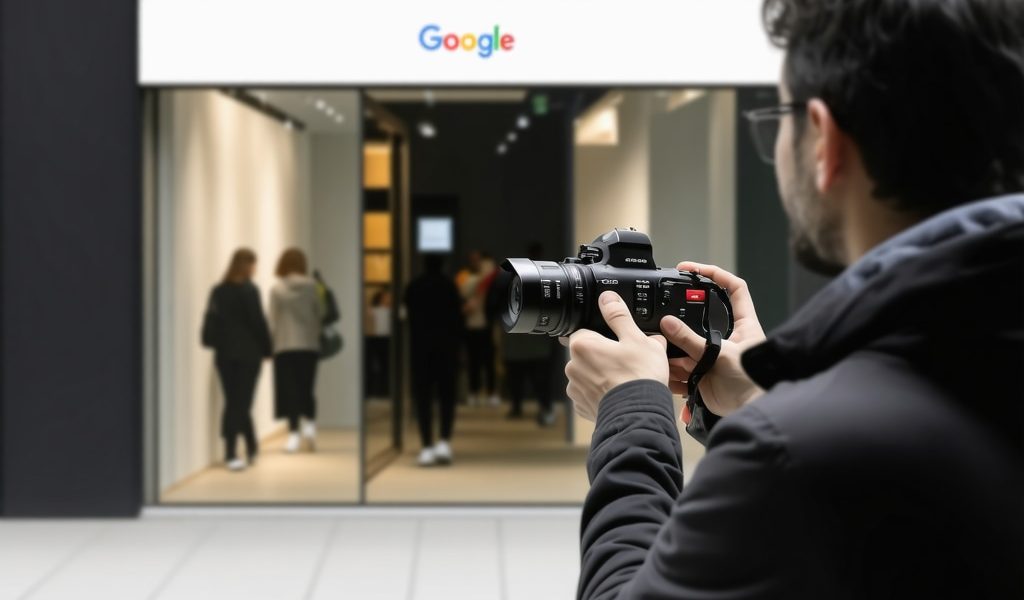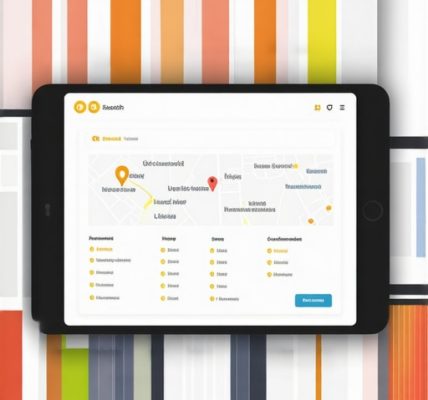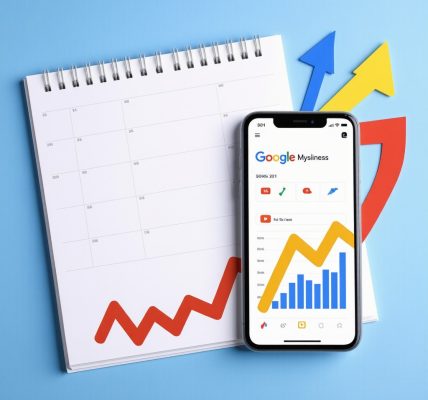Unlocking the Visual Power: Why Google Business Photos Matter for GMB Traffic
In today’s highly competitive local search landscape, the visual representation of your business on Google Business Profile (formerly Google My Business) can be a decisive factor in attracting and converting potential customers. Photos are not just aesthetic additions; they are pivotal elements that influence user engagement, trust, and ultimately, traffic to your GMB listing. Expert studies show that listings with photos receive 42% more requests for directions and 35% more click-throughs to websites (Moz, 2023). This article delves into advanced techniques to optimize Google Business photos effectively and boost your local visibility.
Crafting Your Visual Story: Selecting Photos That Speak to Your Audience
Not all photos carry the same weight in driving user engagement. Prioritize high-quality images that showcase your business’s unique selling points—whether it’s your storefront, interior ambiance, products, or team in action. Images should be consistent with your brand’s story and resonate emotionally with your target demographic. For example, a boutique café might highlight warm, inviting seating areas and freshly brewed coffee shots, while a local gym would benefit from dynamic photos of active classes and equipment.
Technical Mastery: Best Practices for Photo Uploads and SEO Optimization
Google favors photos that meet technical standards and are semantically enriched. Ensure images are high-resolution (at least 720px wide and 720px tall), properly compressed to balance quality and loading speed, and saved in supported formats like JPEG or PNG. Equally important is utilizing descriptive file names and embedding relevant keywords naturally in the photo titles and descriptions—for instance, “downtown-seattle-coffee-shop-interior.jpg” rather than generic names like “IMG1234.jpg.” This metadata helps Google understand the content of your images, enhancing your profile’s search relevance.
How Can Geo-Tagging and User-Generated Content Amplify GMB Photo Impact?
Geo-tagging images embeds location data, signaling to Google the exact area your business serves, which boosts local SEO. While Google doesn’t officially confirm geo-tagging as a ranking factor, many SEO experts observe improved local search performance when photos include location metadata. Additionally, encouraging customers to upload their own photos can create authentic, diverse content that builds trust and engagement. User-generated photos often provide fresh perspectives and reinforce social proof, a critical factor in local consumer decision-making.
Leveraging Photo Categories: Make Every Image Count
Google Business Profile allows you to categorize photos into types such as ‘Exterior,’ ‘Interior,’ ‘Product,’ and ‘Team.’ Strategically populate each category to give users a comprehensive view of your business environment and offerings. For instance, a retail store should upload crisp images of product displays under ‘Product’ and showcase the storefront under ‘Exterior.’ This categorization not only enhances user experience but also signals to Google a well-maintained and trustworthy profile, contributing to better rankings.
Boost Engagement with Regular Photo Updates and Performance Tracking
Consistency is key. Regularly updating your photos keeps your profile fresh and signals to Google that your business is active and relevant. Utilize the Google Business Profile Insights dashboard to analyze which photos generate the most views and customer actions. Adapt your photo strategy based on these insights to maximize impact. For businesses with multiple locations, maintaining unique and localized photo sets can prevent duplicate content penalties and foster stronger local relevance.
For a comprehensive approach to elevating your Google Business Profile, explore our detailed guide on how to optimize Google Business photos for more engagement.
Engage with us by sharing your experiences or questions about photo optimization in the comments below. Your insights could help others master the art of visual SEO for GMB!
My Journey with Geo-Tagging: Small Tweaks, Big Wins
Reflecting on my experience, one of the game-changers for improving local visibility was embracing geo-tagging for photos. Initially, I was skeptical about its impact. But after experimenting with embedding precise location metadata in my images, I noticed a subtle yet consistent uplift in local search traffic. While Google hasn’t formally confirmed geo-tagging as a ranking factor, numerous SEO professionals and case studies, like those highlighted by Moz, suggest its positive influence on local SEO (Moz, 2023). It’s a simple step that can make your photos speak directly to your community and nearby customers.
Encouraging Customers to Share: The Power of User-Generated Content
Another insight I gleaned is how invaluable customer-generated photos can be. When customers upload their own snapshots of your products or services, it adds an authentic layer of social proof that no polished marketing photo can replicate. I started inviting customers to share their photos on my Google Business Profile by offering small incentives and showcasing their images in regular posts. This approach not only boosted engagement but also diversified the visual content, keeping the profile dynamic and relatable. Encouraging this kind of interaction fosters trust and invites potential customers to envision their own positive experience with your business.
What’s the best balance between professional and user-generated photos?
Finding the right mix can be tricky. Too many professional shots might feel staged, while only user-generated content could lack consistency. From my perspective, a combination where professional photos establish your brand’s identity and user-submitted images add authenticity works best. Regularly monitor which photos get the most views and interactions through your Google Business Profile Insights, adjusting your strategy accordingly. This balance ensures your profile feels both trustworthy and approachable.
Harnessing Photo Categories: Organizing for Maximum Impact
When I started categorizing photos into ‘Exterior,’ ‘Interior,’ ‘Product,’ and ‘Team,’ it transformed the way visitors experienced my profile. People could quickly get a holistic sense of my business environment without scrolling endlessly. For instance, the ‘Team’ category humanizes your brand by showcasing the people behind the scenes, building emotional connection. Meanwhile, ‘Product’ photos highlight what you offer in detail. This organization not only improves user experience but also signals to Google that your profile is comprehensive and well-maintained — factors that contribute to higher local rankings.
Keeping It Fresh: The Importance of Regular Updates and Insights
Consistency in updating your Google Business photos is something I initially underestimated. But over time, I realized that fresh content signals to Google that your business is active and relevant. I make it a habit to upload new photos monthly and remove outdated ones to keep the profile sharp. Utilizing the Insights dashboard, I track which photos drive the most customer actions, guiding my content strategy. For anyone managing multiple locations, unique localized photo sets for each spot are vital to avoid duplicate content issues and strengthen local relevance.
To dive deeper into optimizing your photos and leveraging these techniques, I highly recommend checking out this comprehensive guide on Google Business photo optimization. It’s a fantastic resource that complements the practical tips I’ve shared here.
I’d love to hear about your experiences with Google Business photos. Have you experimented with geo-tagging or user-generated content? Share your stories or questions in the comments below — your insights might inspire others on their local SEO journey!
Innovative Techniques in Geo-Tagging: Elevating Local Precision Beyond Basics
While geo-tagging photos embeds essential location data, advancing this practice involves integrating timestamp metadata and leveraging GPS coordinates with precision tools to create a robust local SEO signal. Expert SEO practitioners recommend using EXIF data manipulation tools to embed not just the business location but also surrounding landmarks, enhancing Google’s contextual understanding of your photos’ relevance to specific local searches. This multi-layered geo-contextualization can subtly influence ranking algorithms that assess local intent and proximity, giving your Google Business Profile a tangible edge in competitive markets.
Harnessing AI-Powered Image Optimization: Future-Proofing Your GMB Visuals
The advent of AI in image processing offers unprecedented opportunities to automate optimization while maintaining quality. AI-driven tools can automatically adjust lighting, remove background distractions, and even suggest keyword-rich descriptions based on image content analysis. Incorporating these technologies into your photo management workflow ensures that your images meet Google’s evolving standards for quality and relevance without manual overhead. Moreover, AI can assist in generating variant images tailored for specific user demographics or seasonal trends, maximizing engagement through personalized visual storytelling.
How Can Structured Data Enhance the SEO Value of Google Business Photos?
Structured data markup, specifically Schema.org’s ImageObject, allows businesses to provide Google with detailed information about their images beyond basic metadata. Embedding structured data on your website or within your GMB-linked content helps search engines understand image context, subject matter, and copyright details, which can improve image indexing and local search appearance. For instance, specifying contentUrl, caption, and geo properties in your structured data can amplify your photos’ discoverability in Google’s local pack and image search results. Implementing this requires a nuanced understanding of JSON-LD or Microdata formats but yields measurable gains in photo-driven traffic.
For an authoritative deep dive into structured data applications for local SEO, consult the Google Search Central documentation, which offers expert guidelines on best practices and troubleshooting.
Advanced User-Generated Content Strategies: Cultivating a Community-Driven Visual Ecosystem
Beyond incentivizing customers to upload photos, fostering an ongoing visual dialogue involves integrating multi-channel campaigns that link social media, email marketing, and in-store promotions. Encourage customers to participate in themed photo contests or hashtag campaigns that align with your brand values, creating a repository of high-quality user-generated visuals organically shared across platforms. Utilizing sentiment analysis tools on these images and associated reviews can provide insights into customer perception and emerging trends, allowing for agile content adjustments that resonate deeper with your audience.
Optimizing Photo Categories with Data-Driven Insights: Tailoring Visual Content to User Behavior
Rather than static categorization, apply analytics to monitor user interaction patterns with different photo categories on your GMB profile. Tools like Google Analytics coupled with UTM parameters can track click-through rates and engagement metrics linked to specific image types. This data empowers you to prioritize categories that drive conversions, such as emphasizing ‘Interior’ photos in hospitality businesses during peak seasons or ‘Product’ images for retail during promotions. A dynamic, data-informed photo strategy ensures your visual assets align with user intent and business objectives.
Integrating Video and 360-Degree Imagery: Expanding the Visual Frontier on Google Business Profiles
Incorporating videos and immersive 360-degree photos elevates your GMB profile beyond static images, providing richer user experiences that increase dwell time and engagement. Videos showcasing behind-the-scenes processes, customer testimonials, or virtual tours can dramatically enhance trust and conversion rates. Google supports such media formats, and optimized video thumbnails with descriptive metadata can appear in local search results, widening your visibility. Additionally, leveraging 360-degree photos allows potential customers to explore your business environment virtually, a powerful differentiator in sectors like real estate, hospitality, and retail.
Implementing these advanced visual formats requires careful planning and technical expertise but yields substantial dividends in user engagement and local SEO performance.
Are you ready to elevate your Google Business photos from mere visuals to strategic assets driving measurable growth? Dive deeper into cutting-edge optimization techniques and share your questions or successes with our expert community. Together, we can pioneer the future of local SEO imagery.
Next-Level Geo-Tagging: Integrating Temporal and Contextual Precision for Enhanced Local Ranking Signals
Building upon foundational geo-tagging practices, a sophisticated approach involves embedding temporal metadata alongside precise GPS coordinates within your image EXIF data. This technique enables Google’s algorithms to associate your photos not only with a specific location but also with relevant timeframes—aligning with seasonal or event-driven search intent. Additionally, incorporating contextual references to nearby landmarks or neighborhood identifiers within EXIF enhances semantic relevance. Advanced SEO practitioners utilize tools like ExifTool to automate this layered metadata enrichment, subtly amplifying their Google Business Profile’s local search prominence in hyper-competitive markets.
AI-Driven Image Enhancement: Automating Quality and Semantic Relevance at Scale
Artificial Intelligence-powered image optimization platforms are revolutionizing how businesses manage their visual assets for Google Business Profiles. These systems analyze image content to suggest or autonomously apply improvements such as optimal exposure, noise reduction, and background simplification while dynamically generating keyword-rich descriptions and alt text that resonate with local search queries. By integrating AI workflows, businesses can maintain consistent photo quality and SEO alignment without labor-intensive manual editing, ensuring compliance with Google’s evolving quality standards and maximizing user engagement through personalized visual storytelling.
How Does Structured Data Markup Elevate the Discoverability and Ranking of Google Business Photos?
Structured data markup, particularly using Schema.org’s ImageObject, serves as a vital conduit for communicating rich contextual information about images to search engines. Embedding properties like contentUrl, caption, geo, and copyrightHolder within JSON-LD or Microdata formats enables Google to accurately index and feature your photos in local search results and image carousels. This nuanced metadata framework supports enhanced visibility by clarifying image relevance, ownership, and geographic context, which are crucial for local SEO efficacy. For comprehensive implementation guidance and best practices, reference the authoritative Google Search Central documentation.
Immersive Visual Storytelling: Leveraging Video and 360-Degree Media to Outpace Competitors
Augmenting your Google Business Profile with videos and 360-degree imagery transforms static photo galleries into engaging, immersive experiences. Videos that provide virtual tours, behind-the-scenes insights, or authentic customer testimonials foster deeper emotional connections, increasing dwell time and conversion likelihood. Similarly, 360-degree photos empower users to explore your physical environment interactively, a compelling advantage in industries like hospitality, real estate, and retail. Strategically optimized video thumbnails with descriptive metadata further enhance local search visibility. Deploying these formats demands technical precision but yields significant ROI through elevated engagement metrics and strengthened brand trust.
Data-Driven Photo Category Optimization: Aligning Visual Assets with User Interaction Analytics
Harnessing analytics platforms such as Google Analytics synchronized with UTM parameters enables granular tracking of user engagement across different photo categories within your GMB profile. This data-driven insight facilitates the dynamic allocation of visual resources toward categories demonstrating the highest conversion rates or seasonal relevance. For example, emphasizing ‘Product’ photos during promotional periods or ‘Interior’ images in hospitality sectors during peak seasons ensures your visual content strategy resonates with evolving user intent and business objectives. Such iterative optimization transforms your photo repository from static visuals into a strategic conversion asset.
Community-Driven Visual Ecosystems: Cultivating Authenticity Through Multi-Channel User-Generated Content
Advanced strategies for user-generated content (UGC) transcend simple photo solicitation by orchestrating integrated campaigns across social media, email marketing, and in-store promotions. Encouraging participation in thematic photo contests or branded hashtag initiatives creates a sustainable influx of high-quality, authentic visual content that amplifies social proof. Implementing sentiment analysis on UGC images and accompanying reviews provides actionable insights into customer perceptions and emerging trends, allowing agile refinement of your visual marketing approach. This community-centric methodology fosters brand advocacy and deepens customer engagement, reinforcing your GMB profile’s credibility and local SEO performance.
Are you prepared to elevate your Google Business photos beyond conventional tactics and harness these advanced methodologies for unparalleled local SEO impact? Engage with our expert community to share your experiences or seek bespoke advice on implementing these cutting-edge strategies.
Frequently Asked Questions (FAQ)
Why are Google Business photos crucial for local SEO?
Google Business photos enhance user engagement by visually communicating your business’s identity, offerings, and environment. Listings with optimized photos receive significantly higher click-through and direction requests, signaling relevance and trust to both users and Google’s algorithms, thus improving local search rankings.
How does geo-tagging photos influence my Google Business Profile’s visibility?
Geo-tagging embeds precise location metadata within image EXIF data, which helps Google associate your photos with a specific geographic area. While not officially confirmed as a ranking factor, it enhances local relevance signals, improving your profile’s prominence in localized search results, especially when combined with contextual and temporal metadata.
What is the ideal balance between professional and user-generated photos on a GMB profile?
A strategic mix is essential: professional photos establish brand identity and quality standards, while user-generated photos add authenticity and social proof. Monitoring engagement metrics helps adjust this balance to ensure the profile feels both credible and relatable to potential customers.
How can structured data markup improve the SEO of my Google Business photos?
Implementing Schema.org’s ImageObject structured data allows you to provide Google with rich contextual information about your images, such as location, captions, and copyright. This enhances image indexing and visibility in local search and image carousels, thereby boosting discoverability and ranking potential.
Are videos and 360-degree photos beneficial for my Google Business Profile?
Absolutely. Videos and 360-degree imagery create immersive experiences that increase user engagement, dwell time, and trust. These formats provide dynamic ways to showcase your business environment and offerings, often resulting in higher conversion rates and stronger local SEO performance.
How often should I update my Google Business photos?
Regular updates are vital to signal ongoing business activity and freshness to Google. Monthly or seasonal photo refreshes, guided by performance insights, keep the profile relevant and engaging. For businesses with multiple locations, unique localized content prevents duplication and strengthens local SEO.
What tools can help with advanced geo-tagging and metadata embedding?
Tools like ExifTool allow precise manipulation of EXIF metadata, including GPS coordinates and timestamps. Leveraging such tools enables embedding layered contextual and temporal data, which can subtly enhance local SEO signals beyond basic geo-tagging.
How can AI tools enhance my Google Business photos?
AI-powered image optimization platforms automate enhancements such as lighting correction, background removal, and generation of keyword-rich descriptions. These tools maintain consistent photo quality and semantic relevance at scale, ensuring compliance with Google’s evolving standards while reducing manual workload.
What are effective strategies to encourage user-generated content for my GMB photos?
Integrate multi-channel campaigns involving social media contests, branded hashtags, and in-store promotions to motivate customers to contribute photos. Offering incentives and showcasing UGC in posts fosters community engagement, adds authenticity, and enriches your profile’s visual diversity.
How can I use data analytics to optimize my photo categories?
Utilize tools like Google Analytics with UTM parameters to track user interactions with specific photo categories. Data-driven insights enable prioritizing categories that drive conversions or align with seasonal trends, making your visual content strategy more targeted and effective.
Trusted External Sources
- Moz Local SEO Blog – Provides in-depth research and case studies on optimizing Google Business photos and local SEO best practices, offering data-backed strategies to improve engagement and rankings.
- Google Search Central Documentation – The authoritative resource for implementing structured data markup and understanding Google’s guidelines around image optimization and local business profiles.
- Search Engine Journal – Offers expert articles and updates on the latest trends in local SEO, including advanced geo-tagging techniques and AI applications in image optimization.
- BrightLocal Local Consumer Review Survey – Presents data on the impact of user-generated content and consumer behavior relevant to Google Business Profile optimization.
- Google My Business Help Community – A forum where SEO professionals and business owners share real-world insights, troubleshooting tips, and advanced tactics for managing Google Business photos.
Conclusion
Mastering Google Business photos is no longer about merely uploading attractive images; it requires a sophisticated blend of technical precision, strategic content curation, and continual data-driven refinement. By leveraging advanced geo-tagging, structured data markup, AI-powered enhancements, and immersive media formats like video and 360-degree imagery, businesses can significantly elevate their local SEO performance. Moreover, fostering a vibrant ecosystem of user-generated content and dynamically optimizing photo categories based on user behavior transforms your visual assets into powerful conversion tools. Embracing these expert strategies will not only boost your Google Business Profile’s visibility but also build authentic connections with your community. Ready to transform your local SEO approach? Share your experiences, comment with your questions, and explore our related expert guides to stay ahead in the evolving landscape of Google Business photo optimization.



